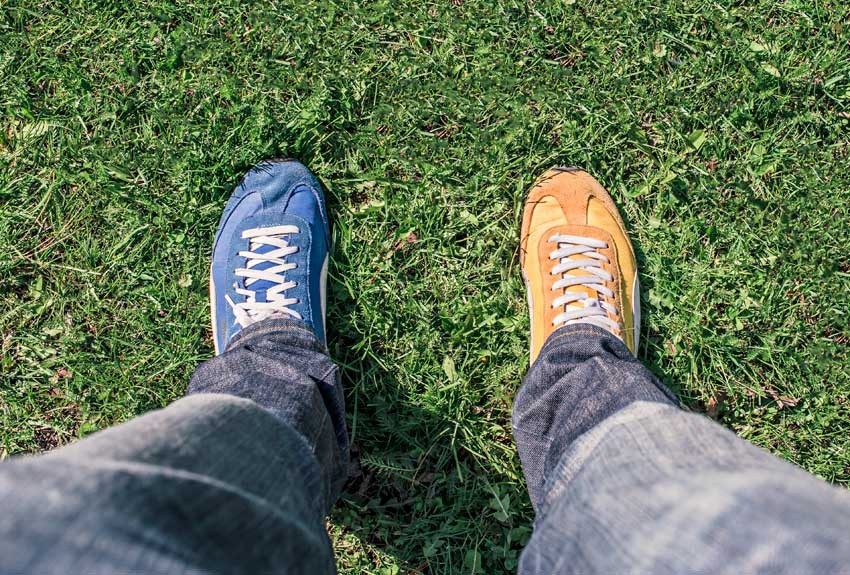The SANE Blog
What’s the difference between bipolar I and II?
On first impression bipolar disorder is easy to understand. It’s a disorder where a person experiences extreme mood changes, highs and lows, with periods of normality in between.
But, when we look further into the disorder, or we hear people talk about their experiences, it starts to get a little more complex, and the terms bipolar I and bipolar II emerge.
So, what’s the difference? And how do these symptoms affect people living with the disorder?
Criteria for bipolar
The premise of bipolar disorder is relatively straightforward.
To be diagnosed a person must experience at least one episode of either ‘mania’ or ‘hypomania’.
For most people diagnosed with bipolar disorder depressive symptoms are also present prior to the emergence of their highs (mania or hypomania). These lows may not always be obvious and the person may not deem them severe enough to seek help.
It’s important to note that everyone’s experience of bipolar is unique. The length and intensity of moods vary from person to person, some people experience mainly highs, others experience more lows, while some ‘rapidly cycle’ between these states. Symptoms may also affect people's insight and understanding in different ways and at different times.
Symptoms specific to bipolar I
Where bipolar I and II differ is the length and intensity of the high and the presence of major depression. Bipolar I requires one experience of mania, but does not require an episode of major depression (however many people do experience symptoms of depression).
The American Psychiatric Association's Diagnostic and Statistical Manual of Mental Disorders (DSM) classifies mania to be a period of abnormality, featuring an elevated, persistent or irritable mood, severe enough to impair functioning, with three or more symptoms of:
- Inflated self-esteem or grandiosity
- Decreased need for sleep
- More talkative than usual
- Flight of ideas
- Distractibility
- Increased goal-directed activity
- Excessive involvement in activities that have high potential for painful consequences.
For an episode to be defined as manic it must last at least one week. Someone experiencing mania may not know they are ill or in need of treatment, and occasionally an episode will include an experience of psychosis or delusional thoughts.
Many people who experience mania describe their actions as euphoric, a feeling of invincibility, where no idea is too big or too optimistic.
Symptoms specific to bipolar II
For bipolar II a person must experience at least one of major depressive episode lasting two-weeks, and one experience of hypomania that lasts at least four days.
Similar to mania, a hypomanic episode features an elevated, persistent or irritable mood, with increased energy, and three or more symptoms of:
- Inflated self-esteem or grandiosity
- Decreased need for sleep
- More talkative than usual
- Flight of ideas
- Distractibility
- Increased goal-directed activity
- Excessive involvement in activities that have high potential for painful consequences.
Unlike mania, an episode of hypomania is not considered severe enough to impact social functioning or to require hospitalisation. It does not include psychosis and the impact of an episode is not considered a ‘significant impairment’. In fact, it is possible for people who experience hypomania to continue to operate within their regular, although modified, routine.
This is not to say bipolar II is a ‘milder’ disorder. The impact and trauma associated with hypomania is just as real and just as debilitating. The experience of depression and the impulsivity associated with bipolar II can also contribute to suicide attempts.
Because someone may not consider their highs to be ‘out of the ordinary’, symptoms of hypomania are not always easy to identify. Therefore, friends and relatives, those who witness someone's symptoms, offer important information required for diagnosis.
'Many people believe that bipolar II is a lesser condition, but having more frequent yet less 'high' episodes is extremely debilitating.'
– Sarah
Now we know the difference, where to now?
For people living with bipolar recovery is possible. Combining medication with a healthy lifestyle and support from community services and health professionals is an effective way to manage and respond to symptoms.
Charlotte is a SANE Ambassador who was diagnosed with bipolar disorder ten years ago. She says she’s made mistakes, but has learnt and continues to refine the management of her symptoms.
‘After the confusion, relief, blaming and identity crisis, I knew I had to sort myself out with help from doctors, medication, therapy, and family understanding,’ she says.
‘I kept going and I’ve become a better human being. I know my own vulnerabilities and accept them. I know my stress triggers, how to step back, take a breath, regroup my feelings and then I can deal with it.
‘Yes, I’ve stuffed up occasionally, but I’ve learnt. Having bipolar disorder doesn’t define me, but it’s helped me to teach my mind to be clearer.’
More to read . . .
- Self-help tips for managing mania
- Busting the myths about bipolar disorder
- SANE Guide to Bipolar Disorder
SANE provides a range of free telephone and online support services for people over 18 years of age with complex mental health needs and their family, friends and carers. We offer different types and levels of support so you can find what works for you. Choose from counselling, peer support, online groups and events, 24/7 community forums, and online information and resources. Learn more at sane.org/get-support.
When you subscribe to the blog, we will send you an e-mail when there are new updates on the site so you wouldn't miss them.
